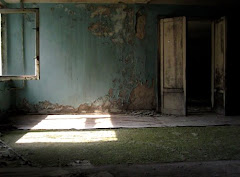Mutation Research 587 (2005) 52–58
A 1,4-dihydropyridine derivative reduces DNA damage and
stimulates DNA repair in human cells in vitro
Nadezhda I. Ryabokon a,1, Rose I. Goncharova b, Gunars Duburs c,
Joanna Rzeszowska-Wolny a,∗
a Department of Experimental and Clinical Radiobiology, Centre of Oncology, M. Sklodowska-Curie Memorial Institute,
Wybrzeze Armii Krajowej 15, 44-101 Gliwice, Poland
b Laboratory of Genetic Safety, Institute of Genetics and Cytology, National Academy of Sciences of Belarus,
Akademichnaya 27, 220070 Minsk, Republic of Belarus
c Latvian Institute of Organic Synthesis, Aizkaukles 21, LV-1006 Riga, Latvia
Received 29 April 2005; received in revised form 18 July 2005; accepted 30 July 2005
Available online 3 October 2005
Abstract
Compounds of the 1,4-dihydropyridine (1,4-DHP) series have been shown to reduce spontaneous, alkylation- and radiationinduced
mutation rates in animal test systems. Here we report studies using AV-153, the 1,4-DHP derivative that showed the highest
antimutagenic activity in those tests, to examine if it modulates DNA repair in human peripheral blood lymphocytes and in two
human lymphoblastoid cell lines, Raji and HL-60. AV-153 caused a 50% inhibition of growth (IC50) of Raji and HL-60 cells at
14.9±1.2 and 10.3±0.8 mM, respectively, but did not show a cytotoxic effect at concentrations <100>3 g/kg when administered
intravenously or >10 g/kg with oral administration) [2]
this group of compounds appears to offer promise for
1383-5718/$ – see front matter © 2005 Elsevier B.V. All rights reserved.
doi:10.1016/j.mrgentox.2005.07.009
N.I. Ryabokon et al. / Mutation Research 587 (2005) 52–58 53
medical applications. Among 12 screened 1,4-DHPs
that differed in chemical structure, six _-carbonyl-1,4-
dihydropyridines that are analogues of dihydronicotinamide,
the hydrogen- and electron-transferring moiety
of the redox coenzymes NADH and NADPH, showed
antimutagenic activity and significantly reduced spontaneous
and alkylation-induced point mutations and chromosome
breaks in germ cells of Drosophila [13,14],
alkylation-induced micronuclei in mouse bone-marrow
cells [15], and radiation-induced chromosome aberrations
and other cytogenetic end-points in fish [16]. The
reduction of mutation frequency reached 85% in some
cases [14]. Studies on Drosophila suggested that the 1,4-
DHPsinhibit chemical mutagenesis due to modulation of
DNA repair [13–15], and in the present study we examined
the effects of AV-153, a 1,4-DHP that showed the
highest antimutagenic activity in animals [13,14], on
spontaneous, chemically- and radiation-induced DNA
damage and its repair in human cells in vitro.
2. Materials and methods
2.1. AV-153
Sodium 3,5-bis-ethoxycarbonyl-2,6,dimethyl-1,4-dihydropyridine-
4-carboxylate (AV-153), synthesized in the Latvian
Institute of Organic Synthesis, is an analogue of the active center
of the reduced form of nicotinamide adenine dinucleotide
(NADH) or its phosphate (NADPH) (Fig. 1). It is a yellow
crystalline powder, resistant to temperature fluctuations, soluble
in water and it passes the cell membrane. Stock solutions
were prepared in phosphate-buffered saline (PBS) or culture
medium and kept in the dark at 4 ◦C during a period of one
month.
2.2. Cells and media
Venous blood from a young non-smoking healthy female
was collected in heparinized tubes. Histopaque-1077 (ICN)
was used to separate mononuclear lymphocytes, which were
washed in RPMI 1640 (Sigma–Aldrich) at 4 ◦C and incubated
in RPMI 1640 with 10% fetal bovine serum (FBS; Gibco), lglutamine
and 0.1% gentamicine at 37 ◦Cin a humidified atmosphere
with 5% CO2. Human HL-60 (promyelocytic leukemia)
and Raji (B-lymphoblastic leukemia) cells were cultured in the
same conditions and used during exponential growth.
Fig. 1. Structure of AV-153. Positions R3 and R5 bear a OC2H5 group
and position R4 a COONa group.
2.3. Assessment of cell viability
We used the colorimetric methyl-thiazol-tetrazolium
(MTT) assay [17] to study cell survival after incubation with
AV-153. Briefly, cells in RPMI 1640 without phenol red
(Sigma–Aldrich) were seeded in 96-well plates (NUNC, Denmark)
using 1.5×104 cells/100_l/well. Equal aliquots of PBS
containing AV-153 at different concentrations were added 24 h
later. Wells without cells or without AV-153 were used to
determine baseline values. After further incubation for 24 h
at 37 ◦C, MTT (Sigma–Aldrich) was added to all wells to
a final concentration of 0.5 mg/ml and the plates were incubated
for 3 h in the same conditions. The formazan crystals
formed were dissolved by addition of 150_l of DMSO and
the optical density (OD) at 570 nm was measured with an
ELx800 microplate reader (Bio-Tek Instruments, USA). The
percentage cell survival was calculated by the equation [viable
cells = (ODt −ODtb)/(ODc −ODcb)×100], where ODt is for
the cell sample with AV-153, ODtb for AV-153 alone (test
blank), ODc for control cells, and ODcb for the control blank
without cells and AV-153. All experimental series were performed
at least three times with triplicate samples. The IC50,
i.e. the concentration at which 50% of cells showed inhibition
of MTT processing, was calculated from the dose-response
curve. The standard Trypan-blue exclusion test was also used
according to the manufacturer’s indications (Sigma–Aldrich)
and blue (non-viable) cells were scored under the microscope.
2.4. Treatment with genotoxic factors
Cells were used at a concentration of 4×105/ml. Gammairradiation
was performed on ice using a 60Co radiotherapy
source (Gammatron, Siemens) at a dose rate of 0.8 Gy/min
to a total dose of 2Gy. In other experiments cells suspended
in ice-cold PBS were incubated with ethylmethane sulfonate
(EMS, Sigma–Aldrich) or hydrogen peroxide (H2O2) at final
concentrations of 100 _Mfor 1–3 min,washed in ice-cold PBS,
and suspended in complete medium at 37 ◦C. Equal aliquots
of AV-153 at different concentrations were added immediately
after irradiation or after washing off the chemical agents.
2.5. Alkaline single-cell gel electrophoresis (comet) assay
DNA breaks were assessed by comet assays as described
in [18–20] with all steps of preparation performed on ice.
Images of 100 randomly selected cells were analyzed per experimental
point. In initial experiments an image-analysis system
(Lucia version 4.60, Laboratory Imaging Ltd.) was compared
with visual scoring and a statistically significant correlation
(r≥0.72, p < d="A1" y ="−a×ln(x)">0.92 and p <>100_Mand the IC50 differed slightly
for the different cell types tested, HL-60 cells being more
sensitive than Raji cells.HL60cells are p53-deficient due
to deletions in the gene coding for this protein [24], but
nevertheless they undergo apoptosis readily and show a
G2 checkpoint [25]. They have been found to be more
sensitive than other cell lines in studies of anticancer
drugs [26,27].
In the lower range of concentrations tested, AV-153
caused a decrease in the level of DNA SSBs as measured
by alkaline comet assays, which detect single and
double strand breaks including those associated with
replication, incomplete excision repair of DNA damage,
or alkali-labile (mostly apurinic and apyrimidinic,
AP) sites [19]. The levels of both endogenous SSBs,
which are common lesions caused byDNAoxidation and
AP sites formed during metabolic processes (up to 104
depurinizations occur in human cells per day [28]), and
of SSBs caused by ionizing radiation (oxidative damage
to bases and cross-links) or alkylating agents like
EMS (N-alkylation of purines and AP sites) were significantly
reduced. These effects suggest that AV-153
may directly stimulate DNA repair, which is consistent
with its influence on DNA-repair kinetics seen here and
also with the results of Goncharova and Kuzhir [13,14]
who showed that it reduced the frequency of spontaneous
and EMS-induced point mutations in germ cells of
Drosophila by 85% and 40%, respectively.AV-153 could
influence cellular redox equilibria, because it may possess
antioxidant activity [14] like several other 1,4-DHP
derivatives [29–31], but this mechanism is improbable,
N.I. Ryabokon et al. / Mutation Research 587 (2005) 52–58 57
Table 3
Effect of AV-153 on DNA-repair rate after irradiation or exposure to H2O2 or EMS
AV-153, M Parameter τ
100_MH2O2 2Gy _-radiation 100_M EMS
Raji Lymphocytes HL-60 Lymphocytes
Mean±S.E. p Mean±S.E. p Mean±S.E. p Mean±S.E. p
0 27.0±2.8 40.6±3.3 12.7 ± 1.2 48.9±14.5
10−5 21.1±2.1 0.07 – – 15.5 ± 2.2 0.24 39.2±13.2 0.06
10−6 – – 40.3±1.7 0.94 8.3 ± 2.3 0.11 – –
10−7 19.2±6.3 0.07 25.8±4.3 0.05 7.7 ± 0.9 0.021 26.9±12.1 0.31
10−8 – – 22.8±2.0 0.04 – – – –
10−9 15.7±1.4 0.0002 – – – – 26.2±2.6 0.2
The experimental points were fitted to the exponential equation y = a×exp(t/−τ) + c, where τ is a time constant inversely related to the rate of DNA
repair. Values in bold show p < 0.05.
because it influencesDNAdamage induced by alkylating
agents.
The structure of AV-153 resembles that of dihydronicotinamide,
the hydrogen- and electron-transferring
moiety of NADH and NADPH, suggesting two possible
mechanisms for its protective effect against DNA
damage. The oxidized form of NADH is a substrate
for ADP-ribosyl cyclases, and cyclic ADP-ribose mobilizes
calcium (reviewed in [32]). We therefore considered
that AV-153 could influence the cell cycle through
calcium signaling, which in turn could influence the
SSB level. However, we observed that AV-153 had no
influence on the cell cycle parameters of HL-60 cells
at concentrations from 10−9 to 10−5M as assessed by
cytofluorometry (data not shown). A second hypothesis
is that since NADH and NaDPH are substrates for
poly(ADP-ribosyl)polymerase, which modifies proteins
involved in DNA repair [32], a modulating effect of AV-
153 on poly(ADP)ribosylation reactions could underlie
its effects on DNA-repair kinetics. Elucidation of the
details of the mechanism of action of AV-153 requires
further studies.
Acknowledgements
The authors thank Ronald Hancock for critical reading
of the manuscript and discussions. This work was
carried out at the Department of Experimental and Clinical
Radiobiology, Centre of Oncology,M. Sklodowska-
Curie Memorial Institute, Gliwice in the framework of
the scientific agreement between this institute and the
Institute of Genetics and Cytology, National Academy of
Sciences of Belarus, Minsk. The studies were supported
by fellowship funds from the Association for the Support
of Cancer Research, UNESCO (Polish Committee), and
the National Cancer Institute (Bethesda, USA) and by a
grant 4T11F01824 from the Polish State Committee for
Scientific Research (KBN).
References
[1] J. Briede, K. Heidemanis, I. Dabina, G. Duburs, Effect of cerebrocrast
on the function of human platelets and release of the
arachidonic acid from plasma membrane, Cell Biochem. Funct.
20 (2002) 177–181.
[2] I. Misane, V. Klusa, M. Dambrova, S. Germane, G. Duburs, E.
Bisenieks, R. Rimondini, S.O. O¨ gren, “Atypical” neuromodulatory
profile of glutapyrone, a representative of a novel ‘class’ of
amino acid-containing dipeptide-mimicking 1,4-dihydropyridine
(DHP) compounds: in vitro and in vivo studies, Eur. Neuropsychopharmacol.
8 (1998) 329–347.
[3] E. Liutkevicius, A. Ulinskaite, R. Meskys, K. Kraujelis, G.
Duburs, V. Klusa, Influence of different types of the 1,4-
dihydropyridine derivatives on rat plasma corticosterone levels,
Biomed. Lett. 60 (1999) 39–46.
[4] A. Klegeris, E. Liutkevicius, G. Mikalauskiene, G. Duburs, P.L.
McGeer, V. Klusa, Anti-inflammatory effects of cerebrocrst in a
model of rat paw edema and on mononuclear THP-1 cells, Eur.
J. Pharmacol. 441 (2002) 203–208.
[5] J. Briede, D. Daija, E. Bisenieks, N. Makarova, J. Uldrikis, J.
Poikans, G. Duburs, Effect of some 1,4-dihydropyridine Ca antagonists
on the blast transformation of rat spleen lymphocytes, Cell
Biochem. Funct. 17 (1999) 97–105.
[6] J. Briede, D. Daija, M. Stivrina, G. Duburs, Effect of cerebrocrast
on the lymphocytes blast transformation activity in normal
and streptozotocin-induced diabetic rats, Cell Biochem. Funct. 17
(1999) 89–96.
[7] L.P. Vartanian, E.V. Ivanov, S.F. Vershinina, A.B. Markochev,
E.A. Bisenieks, G.F. Gornaeva, Iu.I. Pustovalov, T.V. Ponomareva,
Antineoplastic effect of glutapyrone in continual gammairradiation
of rats, Radiat. Biol. Radioecol. 44 (2004) 198–
201.
[8] N.M. Emanuel, L.K. Obukhova, G.Ia. Duburs, G.D. Tirzit,
Ia.R. Uldrikis, Geroprotective activity of 2,6-dimethyl-3,5-
diethoxycarbonyl-l,4-dihydropyridine, Dokl. Akad. Nauk SSSR
284 (1998) 1271–1274.
[9] E.V. Ivanov, T.V. Ponomarjova, G.N. Merkusev, G.J. Dubur, E.A.
Bisenieks, A.Z. Dauvorte, E.M. Pilscik, A new skin radioprotec58
N.I. Ryabokon et al. / Mutation Research 587 (2005) 52–58
tive agent Diethon (experimental study), Radiobiol. Radiother.
(Berl.) 31 (1990) 69–78.
[10] E.V. Ivanov, T.V. Ponomareva, G.N. Merkushev, I.K.
Romanovich, G.Ia. Dubur, E.A. Bisenieks, Ia.R. Uldrikis, Ia.Ia.
Poikans, Radiation modulating properties of derivatives of 1,4-
dihydropyridine and 1,2,3,4,5,6,7,8,9,10-decahydroacridine-1,8
dione, Radiat. Biol. Radioecol. 44 (2004) 550–559.
[11] R.I. Goncharova, T.D. Kuzhir, O.V. Dalivelya, G.Ya. Dubur, Ya.P.
Uldrikis, 1,4-Dihydroisonicotinic acid derivatives, inhibitors of
chemical mutagenesis, Vestnik RAMN 1 (1995) 9–19.
[12] V. Klusa, S. German, Alcoholized maternal rat offspring: model
for testing of physical and psychoemotional neurodeficit, Scan.
J. Lab. Anim. Sci. 23 (1996) 403–409.
[13] R.I. Goncharova, T.D. Kuzhir, A comparative study of the
antimutagenic effects of antioxidants on the chemical mutagenesis
in Drosophila melanogaster, Mutat. Res. 214 (1989) 257–
265.
[14] T.D. Kuzhir, Antimutagens and chemical mutagenesis in Higher
Eukaryotic Systems, Tecknologia, Minsk, 1999.
[15] R. Goncharova, S. Zabrejko, O. Dalivelya, T. Kuzhir, Anticlastogenicity
of two derivatives of 1,4-dihydroisonicotinic acid in
mouse micronucleus test, Mutat. Res. 496 (2001) 129–135.
[16] R.I. Goncharova, Remote consequences of the Chernobyl disaster:
assessment after 13 years, in: E.B. Burlakova (Ed.), Low
doses of radiation: are they dangerous?, Nova Science Publishers
Inc., Huntington, New York, 2000, pp. 289–314.
[17] G. Mickisch, S. Fajta, G. Keilhauer, E. Schlick, R. Tschada, P.
Alken, Chemosensitivity testing of primary human renal cell carcinoma
by a tetrazolium based microculture assay (MTT), Urol.
Res. 18 (1990) 131–136.
[18] M.H.L. Green, J.E. Lowe, S.A. Harcourt, P. Akinluyi, T. Rowe, J.
Cole, A.V. Anstey, C.V. Arlett, UV-C sensitivity of unstimulated
and stimulated human lymphocytes from normal and xeroderma
pigmentosum donors in the comet assay: a potential diagnostic
technique, Mutat. Res. 273 (1992) 137–144.
[19] R.R. Tice, E. Agurell, D. Anderson, B. Burlinson, A. Hartmann,
H. Kobayashi, Y. Miyamae, E. Rojas, J.-C. Ryu, Y.F. Sasaki, Single
cell gel/comet assay: guidelines for in vitro and in vivo genetic
toxicology testing, Environ. Mol. Mutagen. 35 (2000) 206–
221.
[20] O. Palyvoda, I. Mukalov, J. Polanska, A.Wygoda, L. Drobot, M.
Widel, J. Rzeszowska-Wolny, Radiation-induced DNA damage
and its repair in lymphocytes of patients with head and neck cancer
and healthy donors, Anticancer Res. 22 (2002) 1721–1726.
[21] A. Collins, S. Duthie, V. Dobson, Direct enzymic detection of
endogenous oxidative base damage in human lymphocyte DNA,
Carcinogenesis 14 (1993) 1733–1735.
[22] A. Collins, I. Fleming, C. Gedik, In vitro repair of oxidative and
ultraviolet-induced DNA damage in supercoiled nucleoid DNA
by human cell extract, Biochem. Biophys. Acta 1219 (1994)
724–727.
[23] M.F. Kotturi, D.A. Carlow, J.V. Lee, H.J. Ziltener, W.A. Jefferies,
Identification and functional characterization of voltagedependent
calcium channels in T lymphocytes, J. Biol. Chem.
278 (2003) 46949–46960.
[24] D. Wolf, V. Rotter, Major deletions in p53 tumor antigen cause
lack of p53 expression in HL-60 cells, Proc. Natl. Acad. Sci.
U.S.A. 82 (1985) 790–794.
[25] Z. Han, D. Chatterjee, D.M. He, J. Early, P. Pantazis, J.H.
Wyche, E.A. Hendrickson, Evidence for a G2 ckeckpoint in p53-
independent apoptosis induction by X-irradiation, Mol. Cell. Biol.
15 (1995) 5849–5857.
[26] C. Unger, H. Eibl, D.J. Kim, F.A. Fleer, J. Kotting, H.H. Bartsch,
G.A. Nagel, K. Pfizenmaier, Sensitivity of leukemia cell lines to
cytotoxic alkyl-lysophospholipids in relation to O-alkyl cleavage
enzyme activities, J. Natl. Cancer Inst. 78 (1987) 219–222.
[27] D. Berkovic, E.A.M. Fleer, J. Breass, J. Pf¨ortner, E. Schleyer,W.
Hiddemann, The influence of 1-_-arabinofuranosylcytosine on
the metabolism of phosphatidylcholine in human leukemic HL
60 and Raji cells, Leukemia 11 (1997) 2079–2086.
[28] S. Loft, H.E. Poulsen, Cancer risk and oxidative DNA damage in
man, J. Mol. Med. 75 (1996) 67–68.
[29] A. Velena, J. Zilbers, G. Duburs, Derivatives of 1,4-
dihydropyridines as modulator of ascorbate-induced lipid peroxidation
and high-amplitudes swelling of mitochondria, caused
by ascorbate, sodium linoleate and sodium pyrophosphate, Cell
Biochem. Funct. 17 (1999) 237–252.
[30] D. Mantle, V.B. Patel, H.J. Why, S. Ahmed, I. Ratman, W.
MacNee, W.S. Wassif, P.J. Richardson, V.R. Preedy, Effects of
lisinopril and amlodipine on antioxidant status in experimental
hypertension, Clin. Chim. Acta 299 (2000) 1–10.
[31] M. Inouye, T. Mio, K. Sumino, Nivadipine protects low-density
lipoprotein cholesterol from in vivo oxidation in hypertensive
patients with risk factors for atherosclerosis, Eur. J. Clin. Pharmacol.
56 (2000) 35–41.
[32] M. Ziegler, New functions of a long-known molecule. Emerging
roles of NAD in cellular signaling, Eur. J. Biochem. 267 (2000)
1550–1564.
Inscription à :
Publier les commentaires (Atom)

















Aucun commentaire:
Enregistrer un commentaire